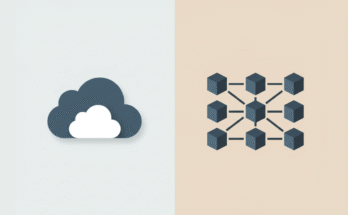In recent years, NFTs (Non-Fungible Tokens) have taken the world by storm, sparking debates, excitement, and curiosity. From digital art selling for millions to virtual real estate and collectibles, NFTs have carved out a unique space in the digital economy. But what exactly makes NFTs so special? Let’s dive in and explore the fascinating concept of digital ownership and why NFTs are reshaping how we think about value in the digital age.

What Are NFTs?
Before we get into their uniqueness, let’s quickly recap what NFTs are. NFTs are digital tokens that represent ownership of a unique asset. Unlike cryptocurrencies like Bitcoin or Ethereum, which are fungible (meaning one Bitcoin is equivalent to another), NFTs are one of a kind or limited-edition assets. They’re stored on blockchain technology, ensuring transparency and security.
NFTs can represent anything digital artwork, music, videos, tweets, virtual goods in games, or even domain names. Essentially, they’re a way to prove ownership and authenticity of digital items.
The Key Features That Make NFTs Unique
→ So, what sets NFTs apart from other digital assets? Here are some standout characteristics:
1. Proof of Ownership
One of the most groundbreaking aspects of NFTs is their ability to provide indisputable proof of ownership. When you buy an NFT, you’re purchasing a certificate of authenticity recorded on the blockchain. This means no one can dispute your claim to the asset. For example, owning an NFT of a digital painting ensures that you’re recognized as the rightful owner, even if copies of the image exist elsewhere online.
2. Scarcity
Many NFTs are intentionally designed to be scarce or limited in supply. This scarcity often drives their value. Think of it like owning a rare trading card or a limited-edition sneaker, except in digital form. Artists and creators can choose how many copies of an NFT exist, making some assets highly coveted due to their rarity.
3. Interoperability
NFTs can be used across various platforms and marketplaces. For instance, if you purchase a virtual outfit for your avatar in one game, you might be able to use it in another compatible game. This interoperability adds a layer of versatility that traditional digital goods often lack.
4. Programmability
NFTs aren’t just static assets, they’re programmable. Smart contracts, self-executing code stored on the blockchain can be embedded within NFTs. This allows creators to set rules, such as royalty payments every time the NFT is resold. It’s a game-changer for artists and musicians who can continue earning from their work long after the initial sale.
5. Global Accessibility
The blockchain operates globally, meaning anyone with an internet connection can participate in buying, selling, or creating NFTs. This democratizes access to markets that were once restricted by geographical or financial barriers.
[The Emotional Connection] Owning Something Truly Unique
Beyond technical features, there’s an emotional and psychological aspect to NFTs that makes them special. Owning an NFT often feels like owning a piece of history or culture. Whether it’s a viral meme immortalized as an NFT or a groundbreaking piece of digital art, these tokens carry stories and significance.
For collectors, the thrill of owning something unique and verifiable adds a personal touch that traditional digital files lack. Even though anyone can view or download an image online, the knowledge that you own the original NFT creates a deeper connection to the asset.
Challenges and Criticisms
While NFTs are undeniably innovative, they’re not without their challenges. Critics often point out environmental concerns related to blockchain technology’s energy consumption (though many platforms are transitioning to greener alternatives). Additionally, the speculative nature of NFT markets can lead to volatility and risks for buyers.
There’s also the question of copyright and intellectual property rights. Owning an NFT doesn’t necessarily mean you own the copyright to the underlying asset, it simply means you own the token representing it. This distinction can be confusing for newcomers.
The Future of Digital Ownership
Despite these challenges, NFTs are paving the way for new possibilities in digital ownership. Imagine a future where concert tickets are issued as NFTs, granting fans exclusive perks like backstage access or limited-edition merchandise. Or consider how NFTs could revolutionize education by offering verifiable certificates and diplomas stored on the blockchain.
As technology evolves and understanding deepens, NFTs could become an integral part of our daily lives, not just in art and collectibles but across industries like gaming, fashion, real estate, and even healthcare.
Conclusion
NFTs are unique because they’ve redefined what it means to own something in the digital world. They blend technology, creativity, and innovation to create assets that are both valuable and meaningful. Whether you’re an artist looking to monetize your work or a collector chasing rare finds, NFTs offer opportunities that were unimaginable just a few years ago.
As with any new trend, it’s important to approach NFTs with curiosity but also caution, educate yourself about how they work, what they represent, and their potential risks before diving in. Who knows? You might just find yourself owning a piece of digital history someday.



